Now that you have that lovely jewel box made of aluminum, you’re probably wondering how to keep it looking awesome. We’ve got you covered on that: we recently held a maintenance webinar and answered the Most Commonly Asked Questions about Airstream exterior cleaning and maintenance.
What’s the best product to clean and protect my Airstream’s aluminum?
If you’ve got an aluminum Airstream made in the last four decades, it has a protective clearcoat covering the aluminum. This clearcoat is like paint, and you can take care of it the same way you care for your car. Any good car wash will do.
If you wash the Airstream a lot, tiny scratches can form in the clearcoat from harsh scrubbing or grit. Whether you use soft bristled brushes, microfiber mitts, or sponges, be sure to rinse out the cleaning tool frequently and brush lightly. There shouldn’t be any need to scrub hard. Tree sap and sticky bugs are best gently removed by softening them with a dedicated bug/tar/sap remover (which you can get at any auto parts store or general merchandise store) instead of scrubbing.
To protect the surface you can use any natural or synthetic wax made for painted vehicles. I recommend polymer waxes for the front dome (at least) because bugs seem to stick less, which makes the next washing a lot easier.
By the way, there’s a bit of lore about a product called Walbernize. Airstream recommended it for a long time for their earlier clearcoat formulation (pre-1999) and now it has taken on a mythological standing. In reality, the current formulation of clearcoat is so tough and resistant to UV that any good car wash and wax will do.
What’s the easiest way to clean my Airstream?
Take it to the truck wash. Prices vary but I’d expect to pay about $40 for your truck and trailer. Many truck stops have washes like Blue Beacon, and they do a pretty good job. If you’re a perfectionist you should probably do it yourself, but whenever a truck wash misses a spot I just point it out and they’ve always made it right.
Beware of going to the truck wash if there’s a line. Four trucks in front of you means you’ll wait about an hour. But don’t be tempted to go to a regular car wash with a trailer!
When I’m on the road for a long trip, I generally try to hit the truck wash about once a month, or immediately after camping near salt water or encountering “love bugs” in Florida.
Tell me about filiform corrosion—what is it, and how do I fix it?
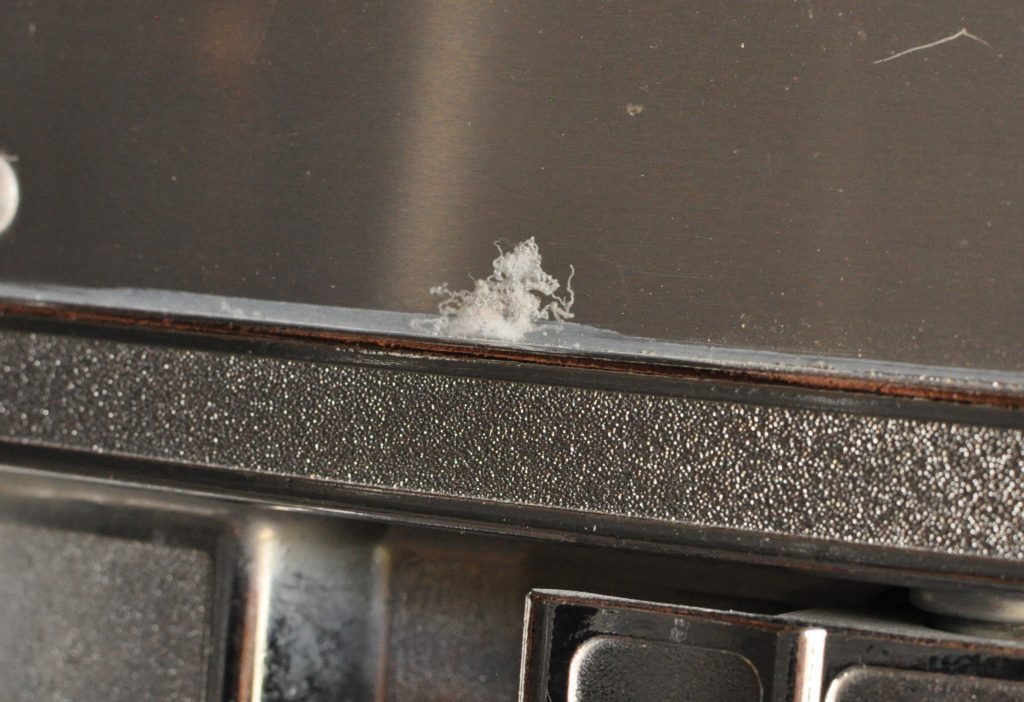 Your Airstream is admirably protected against rusting. The body is aluminum, and the rock guards are stainless steel. The fasteners are all made of non-corrosive metals as well.
Your Airstream is admirably protected against rusting. The body is aluminum, and the rock guards are stainless steel. The fasteners are all made of non-corrosive metals as well.
But nothing is perfect. Corrosion happens. Even aluminum will naturally oxidize under most conditions, and the oxidization happens more rapidly in high humidity or where accelerants such as sea salt or magnesium chloride (used on roads) are present.
Ever see white “spider webs” forming on your Airstream, like those in the picture? That’s filiform corrosion. Filiform corrosion is what happens aluminum begins to oxidize and there’s a clearcoat for the corrosion to “worm” under.
Filiform starts wherever there’s a tiny gap for moisture to get under the clearcoat. That means anywhere the aluminum has an edge or gets nicked. This includes the body panels, taillights, wheels, and door handles.
Filiform isn’t an indication of a defect. It’s just something that happens. It’s impossible to prevent under all circumstances. All you can do is try to minimize it. You can slow it down in a few ways:
- Wash the Airstream as soon as possible after camping near salt water
- Don’t store the Airstream in a damp spot, or in an enclosed barn unless it can be kept very dry
- Wash the Airstream thoroughly after towing on roads that have been salted (wintertime)
There’s really no fix for filiform corrosion that has already happened. Since the corrosion is beneath the clearcoat, you can’t remove it without removing the clearcoat first—which tends to cause an uglier problem. If you’ve got a badly corroded taillight, wheel, or door handle, you can remove that part, then strip it completely and re-coat it, or just install a replacement part.
The good news is that filiform stops growing when the humidity drops below about 60%. So the more time you spend in the desert, the less filiform you’ll gain!
How do I get decals or stickers off my Airstream?
Use a 3M Eraser Wheel (or equivalent). Don’t use toxic chemicals. This short video shows how it works.
How do I clean behind the window stone guards and the stainless steel rock guards?
They’re actually pretty easy to open for cleaning. For the stainless rock guards you need a wrench, but that’s all. Airstream did a pretty good video showing the procedure, and in this case a video is worth 1,000 words:
For more cleaning and maintenance tips check out my book, “Airstream Life’s (Nearly) Complete Guide to Airstream Maintenance” which is available in the Airstream Life Store.
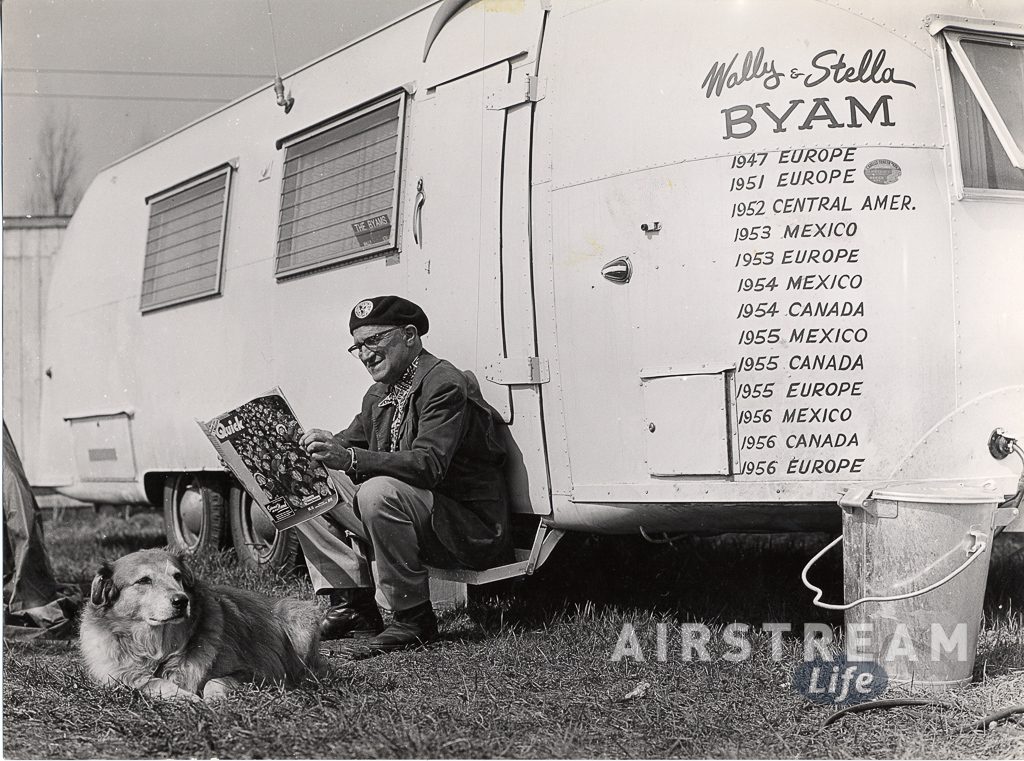
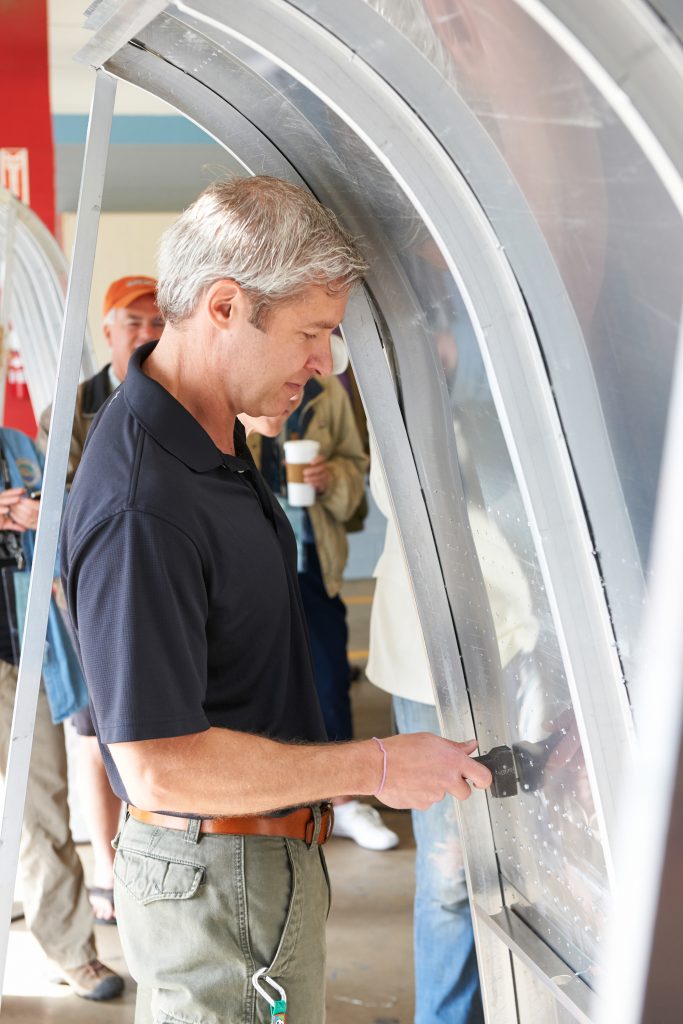
 The inside installer holds a shaped metal tool called a “bucking bar” that is pressed against the tail (or stem) of the rivet. The rivet gun very quickly hammers the rivet, pushing it inward and squashing the tail against the bucking bar, which causes the tail to get shorter and wider. This fills the hole and locks the two pieces of aluminum together very strongly.
The inside installer holds a shaped metal tool called a “bucking bar” that is pressed against the tail (or stem) of the rivet. The rivet gun very quickly hammers the rivet, pushing it inward and squashing the tail against the bucking bar, which causes the tail to get shorter and wider. This fills the hole and locks the two pieces of aluminum together very strongly.
 Airstream uses a variety of pop rivets, but most are aluminum and most have 1/8” diameter body or 3/16” diameter body. You can find the basic type in hardware stores. There are also specialty rivets with extra-wide heads, used for belly pan repairs. It’s a good idea to have a few of those in your tool kit too.
Airstream uses a variety of pop rivets, but most are aluminum and most have 1/8” diameter body or 3/16” diameter body. You can find the basic type in hardware stores. There are also specialty rivets with extra-wide heads, used for belly pan repairs. It’s a good idea to have a few of those in your tool kit too. 
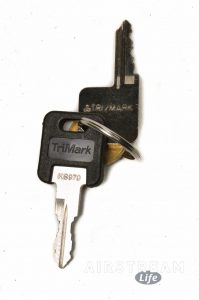 Finally the inevitable call to a locksmith goes out. An hour or two later, and a $100 bill, and they’re back inside.
Finally the inevitable call to a locksmith goes out. An hour or two later, and a $100 bill, and they’re back inside. This one is a bit controversial. We used to sell a very nice tie-down kit in the Airstream Life Store that was great for securing almost anything to the ground. (I still like the product, but we stopped selling them because not very many people bought them.)
This one is a bit controversial. We used to sell a very nice tie-down kit in the Airstream Life Store that was great for securing almost anything to the ground. (I still like the product, but we stopped selling them because not very many people bought them.)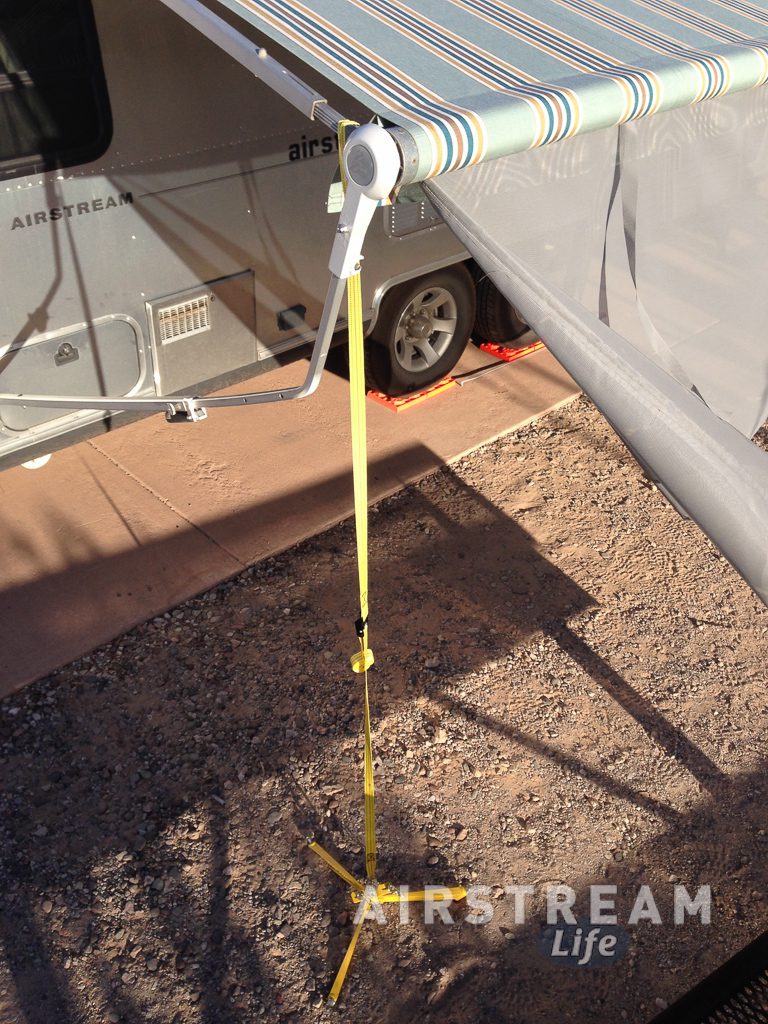
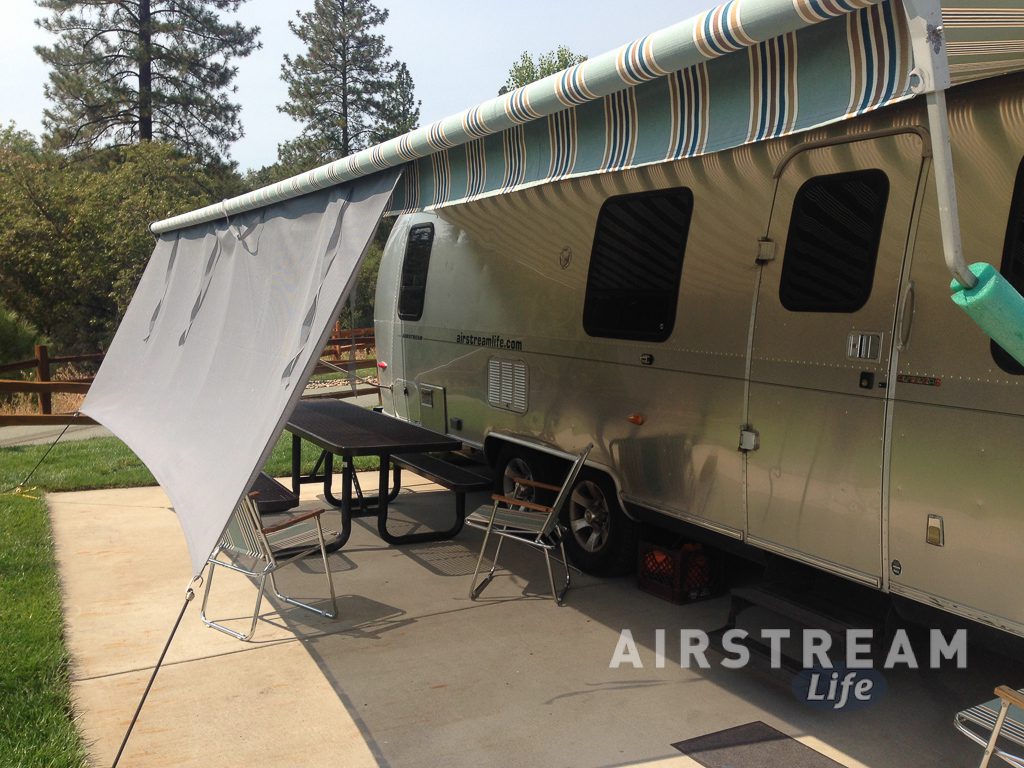 The theory against using a tie-down seems to stem from the idea that a Zip Dee awning has some flex built into it, which helps it resist damage in the wind. If so, I’m taking some of that flex away by pulling the awning down with my tie-down. I can live with that, in exchange for a bit of quiet. Obviously, if the wind picks up, I’ll disconnect the tie-down and roll up the awning. We’re not talking about complex calculus here.
The theory against using a tie-down seems to stem from the idea that a Zip Dee awning has some flex built into it, which helps it resist damage in the wind. If so, I’m taking some of that flex away by pulling the awning down with my tie-down. I can live with that, in exchange for a bit of quiet. Obviously, if the wind picks up, I’ll disconnect the tie-down and roll up the awning. We’re not talking about complex calculus here.